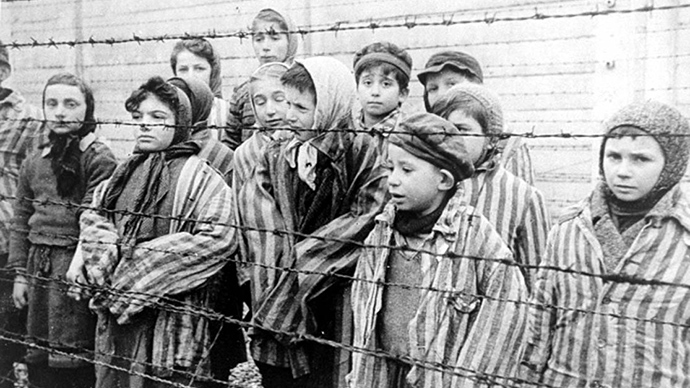Nazi camp liberator: ‘People remained human despite unspeakable horror’

Nowhere else were Nazi atrocities as evident as in the death camps, where thousands of human beings became “live material.” RT interviewed people, who were no stranger to these realities – both liberators and those from behind barbed wire.
Seventy years have passed since the liberation of Auschwitz concentration camp in Poland where over a million people died, setting the date for the Holocaust commemoration. Yet, all the recognized Auschwitz horrors, hidden behind the slogan “Arbeit macht Frei” (“Work makes free”) – soul-sucking slave labor, cruel medical experiments and gas chambers – weren’t the only means of torturing those whom the Nazis deemed inferior.
Watch RT's special project War Witness here
Ozarichy concentration camp in Belarus had people from various Slavic nationalities collected behind barbed wire in a closed forest area. Its less known story has been told by one of its liberators, WWII veteran Irina Gryzova who is now 87 years old.
March, 1944: Ozarichi concentration camp for civilians pic.twitter.com/VIh8qvcX2E
— RT's WWII Tweets (@Voina_41_45eng) March 19, 2015
Soviet reconnaissance groups found its “unspeakable horror” by accident in the winter of 1944. As many as 33,000 people were lying on the frozen ground deliberately infected with typhus, she says. The Nazis used the civil population as a hook to spread the disease to the enemy army.
Gryzova recalls: “The Germans expected, they were sure, that we won’t leave our own people in times of need, that we would certainly help them. And that’s what happened. We evacuated them.”
“No matter what situation people find themselves in, even the most extreme and horrible living conditions, death every day, and every hour the fear of death, they still remained human. They kept remembering, dreaming, writing poetry, composing songs and singing those songs.”
And people, who were kept in many other concentration camps in striped robes with their names erased and substituted by numbers, had to remain strong and hopeful inside in order to survive.
“Twice I was beaten up, twice I was sentenced to death. The tortures I endured were operations without anesthesia. It was common practice there,” said Eduard Zimovets – survivor of Sachsenhausen concentration camp in northeast Germany. He was sent to the camp at the age of 15, lost nearly all his teeth, but upon being freed he “literally on the second day” joined a tank brigade that liberated the prisoners.
Another camp survivor Nina Lych, who was brought to Auschwitz at the age of two and is now 76 years old, recalls that that the horrors began “when they started taking children from their parents.” She lost her mother with her last memory of her being “the human hand – tender, warm touch.”
Lych describes some medical experiments that were conducted in the camp. “We were given injections and pills. It was Dr. Mengele, he was the executioner, later called the Angel of Death,” she said. “They dipped people into tanks containing some liquid – their bodies would burst apart. Then they’d be taken and dipped into another tank – the bodies would start to heal.”
Auschwitz-Birkenau concentration camp was liberated in January 1945, and Victor Ognev, 89, who was a T34 tank driver and mechanic, recalls that day:
“There was no one behind the gate. The place was empty. The prisoners were all locked up inside the barracks, as the Germans were ready to exterminate them.”
Later, the largest concentration camp complex, in Poland, became a museum that conducts research in the Holocaust, the genocide of 6 million Jews by the Nazi regime.












